
Rewrite
Lead ImageEugene Souleiman for Wig Academy Photography by Harry Miller
Eugene Souleiman is rolling cigarettes and smoking them at a seemingly glacial pace as he Zooms in from his studio in East Sussex, ensconced in a sunny corner away from the alleged “mess” of his hairy works of genius beyond where his webcam can see. “This is my permanent … I don’t know, place of chaos, really,” he says wryly. “It’s in a really beautiful part of the world, near Ashdown Forest. It’s very barren.” It’s understandable he would headquarter his work away from London’s incessant racket; as a hairstylist, Souleiman has spent more than 40 tireless years leaving his mark on some of fashion’s greatest moments, rejecting hair orthodoxy and blazing a new trail that other stylists couldn’t help but follow. He’s worked with the greats, including John Galliano, Alexander McQueen, Junya Watanabe, Yohji Yamamoto, Lady Gaga, and many more. “I wouldn’t say I was a traditional hairdresser,” he claims, which I’d say is something of an understatement.
We’re here to discuss his recent collaboration with Wig Academy, an online hub for video masterclasses in hair and wig styling, founded by hairstylist Pablo Kuemin during the pandemic. “Like all of the best projects, it started out as a conversation between friends. It was at a time when we were struggling to have an outlet,” he says, “and it was great for me to go back to the drawing board. I used to teach hairdressers, but I always thought the system of training and the dynamics of ‘teacher-student’ weren’t really current or relevant.”
In the videos, Souleiman dons a GoPro as he recreates 13 singular looks from his archive, dyeing, snipping, spraying, even flocking hair, all on a specially made concrete mannequin. There’s a visual guide to recreating Grace Coddington’s russet waves, an amorphous neon pink afro, and even a towering beehive wig constructed around a 19th-century crinoline. “We looked at every area [of hairstyling tuition] and basically fucked with it. It’s the first thing I’ve done that I felt like I haven’t been handcuffed.” What was meant to be a series of eight videos spiralled into 12 as he pushed his reinventions further than before – not just utilising techniques that could be learned in a checkbox-graded diploma, but through feeling and impulse, applying products you might find in a builders merchants or art suppliers. “We don’t talk about what inspires us enough. We’re always in the right side of our brains with the technique,” Souleiman says. “Whenever I hear someone talk like that, they just lose me. I don’t find it interesting in the slightest.”
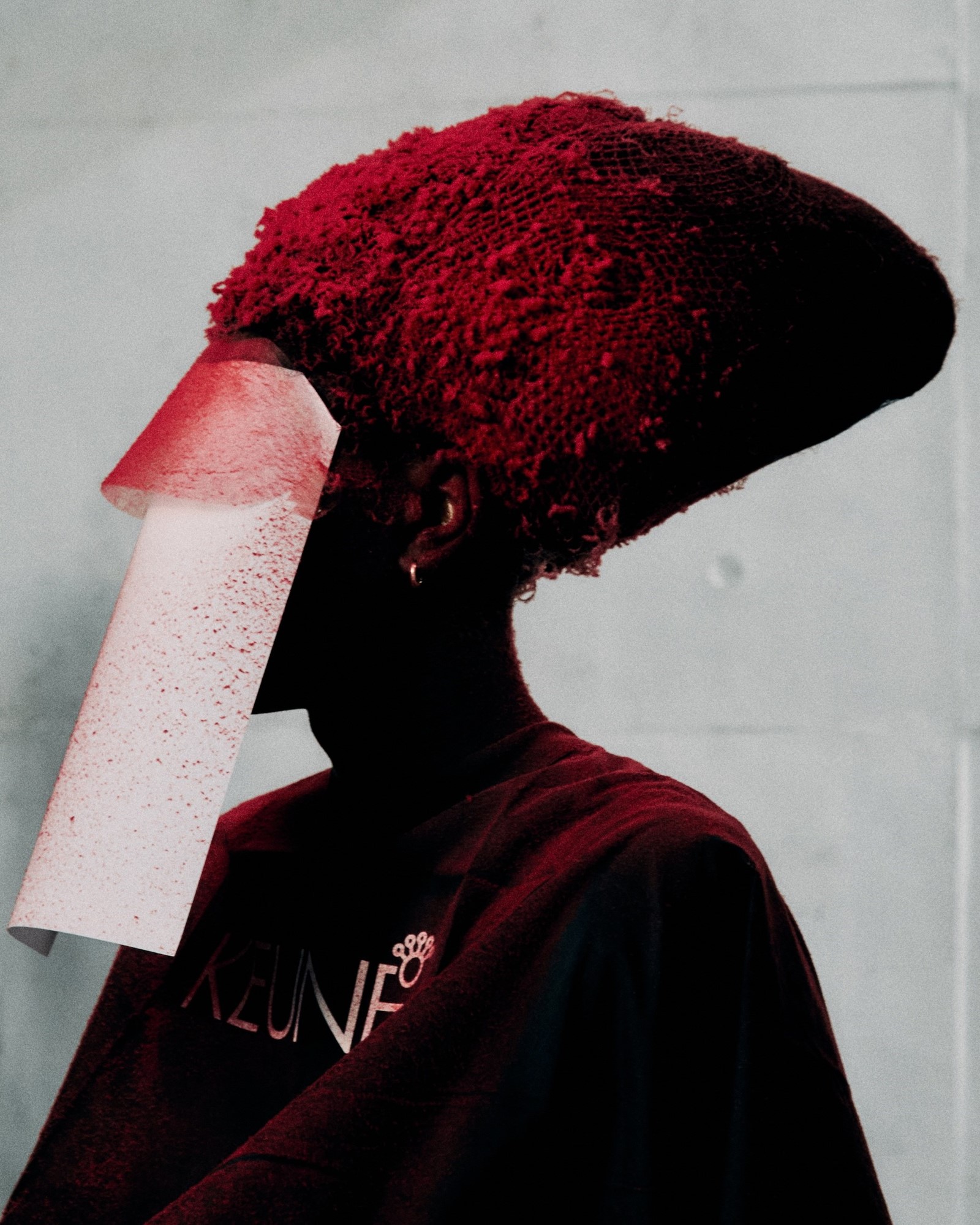

Souleiman grew up in 1970s London during a time of cultural revolution. At a time when The Clash and Sex Pistols were leading a creative rebellion, and disenfranchised youth bit back at the mainstream, Souleiman was kicked out of Goldsmiths University and arrived at a local job centre. He wore Vivienne Westwood clothes with his punk rocker hair, and was told he’d make a good hairdresser by one of the staff. An apprenticeship preceded an assisting job with Vidal Sassoon’s protégé Trevor Sorbie, before forging his own way in the editorials of countercultural titles like Dazed and i-D.
“When I started I literally had no money. I was eating beans on toast for a year and taking multivitamins. I remember not being able to afford to travel, I was getting the train to London Bridge for The Face not having a ticket, and I had to wait for the guard to go to another platform so I could jump over the fence and walk to Old Street with a rucksack full of hair equipment,” he remembers. “When I started there wasn’t 400 quid a day, there wasn’t Uber, there wasn’t catering. I remember backstage at one of Lee [Alexander] McQueen’s first shows, his mum brought tinned salmon and cucumber sandwiches and three bottles of lemonade for everyone at the show. But I think hard times grow strong people.” By the early 90s, with the advent of grunge, he was working with Calvin Klein, Jil Sander and Prada.
Souleiman credits his longevity to an adaptability with clients. The prolific people and brands he’s worked are outsiders and radicals who have built their worlds embedded with personal meaning and ideologies, and a need to communicate something greater, more vital than simply the cloth they use to dress bodies. “My first show in Paris was with Yohji. I went to the fitting and everything on the rack was black, black, black – a sea of black clothes. I thought, what the fuck am I going to do with this? They’re going to look like nuns. When they were fitting the girls, and I realised the clothes came to life when they were worn – there was a relationship between the body and the clothing happening inside the outfit,” he says. “The space in between is the thing that creates the outfit. That changed how I look at hair; it’s not about creating a curl, it’s what happens between the curl and the movement. It gave hair a life force.”
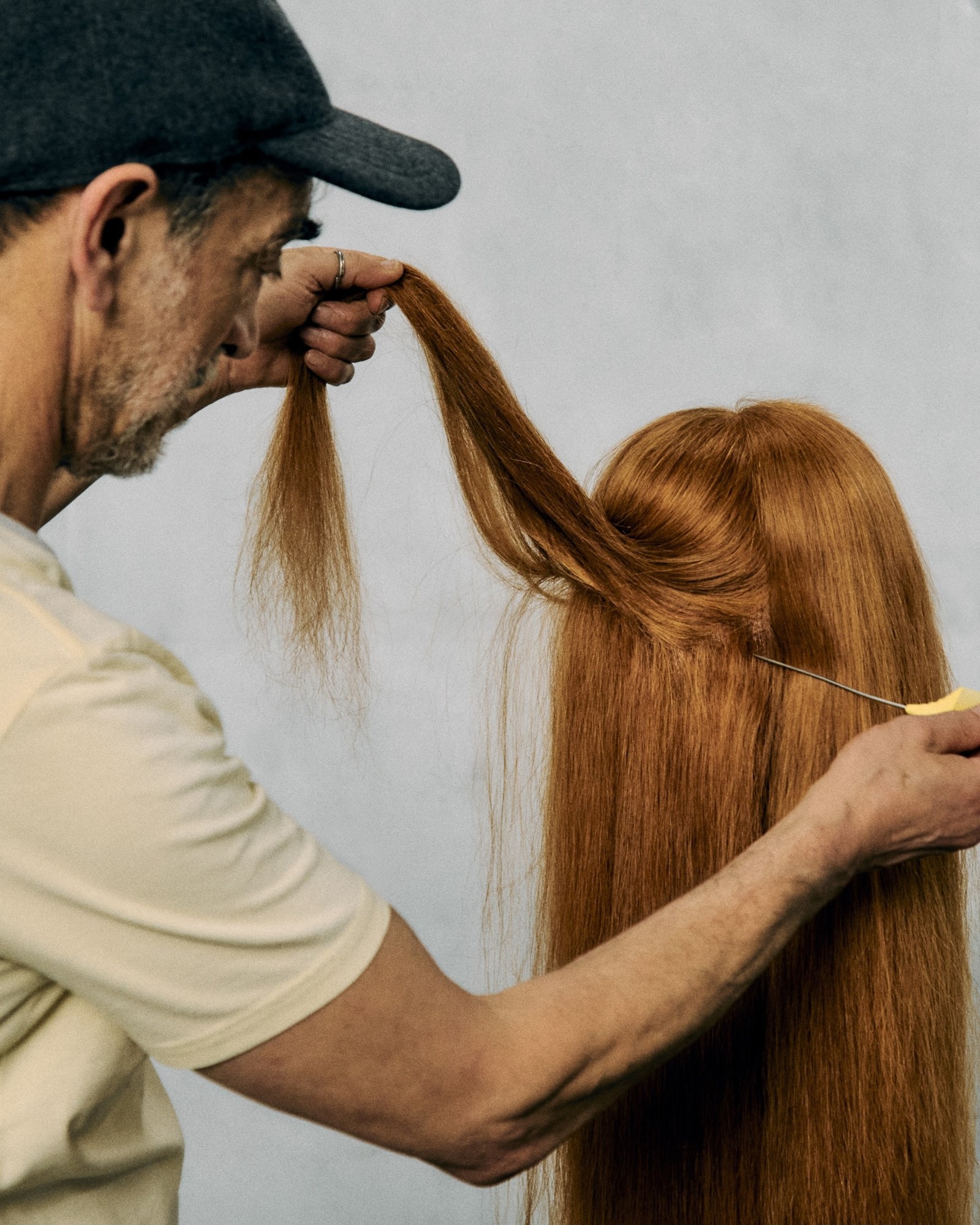
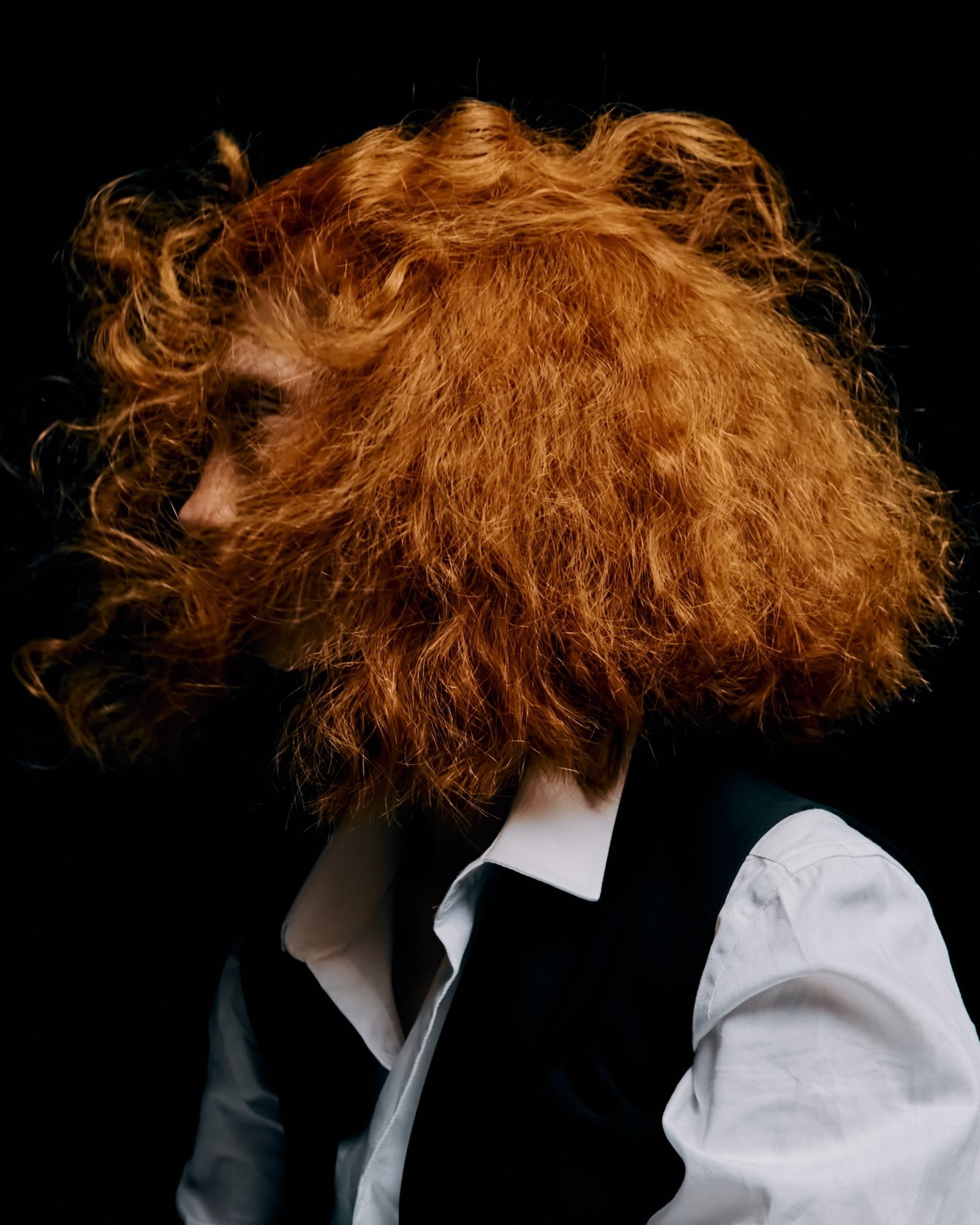
In school, Souleiman struggled with academia. “I’m on the spectrum of a few things: I have a little ADHD, and I’m dyslexic. I taught myself to read. I could probably understand two or three words of a sentence to begin with, and there would always be one word that caught me. I would read the few words that I understood, and imagine what the next word is,” he says, before having a eureka moment about the inner wirings of this brain. “I was constantly going backwards and forwards, and that’s kind of how I work creatively. If something’s not quite right, I’ll step back, have a coffee and get my assistant to pretend they’re doing something. All of a sudden it will make sense, like I’m remembering that missing word. I’m constantly going in and out.”
I met Souleiman once on set when he’d worked his magic for a cover shoot in AnOther Magazine, which was photographed by his regular collaborator Craig McDean. The atmosphere on most editorial shoots can often feel quite chilly, as creatives quickly and quietly tussle to stamp their personal mark on each look. But Souleiman snipped through the tension, cracking jokes with the models and crew who conversed with and confided in him. He asked McDean and our fashion director Katie Shillingford to open up, explain their references, their hopes for each image. He listened eagerly, politely pitched his ideas, and delicately crafted each hairstyle. The outcome was brilliant.
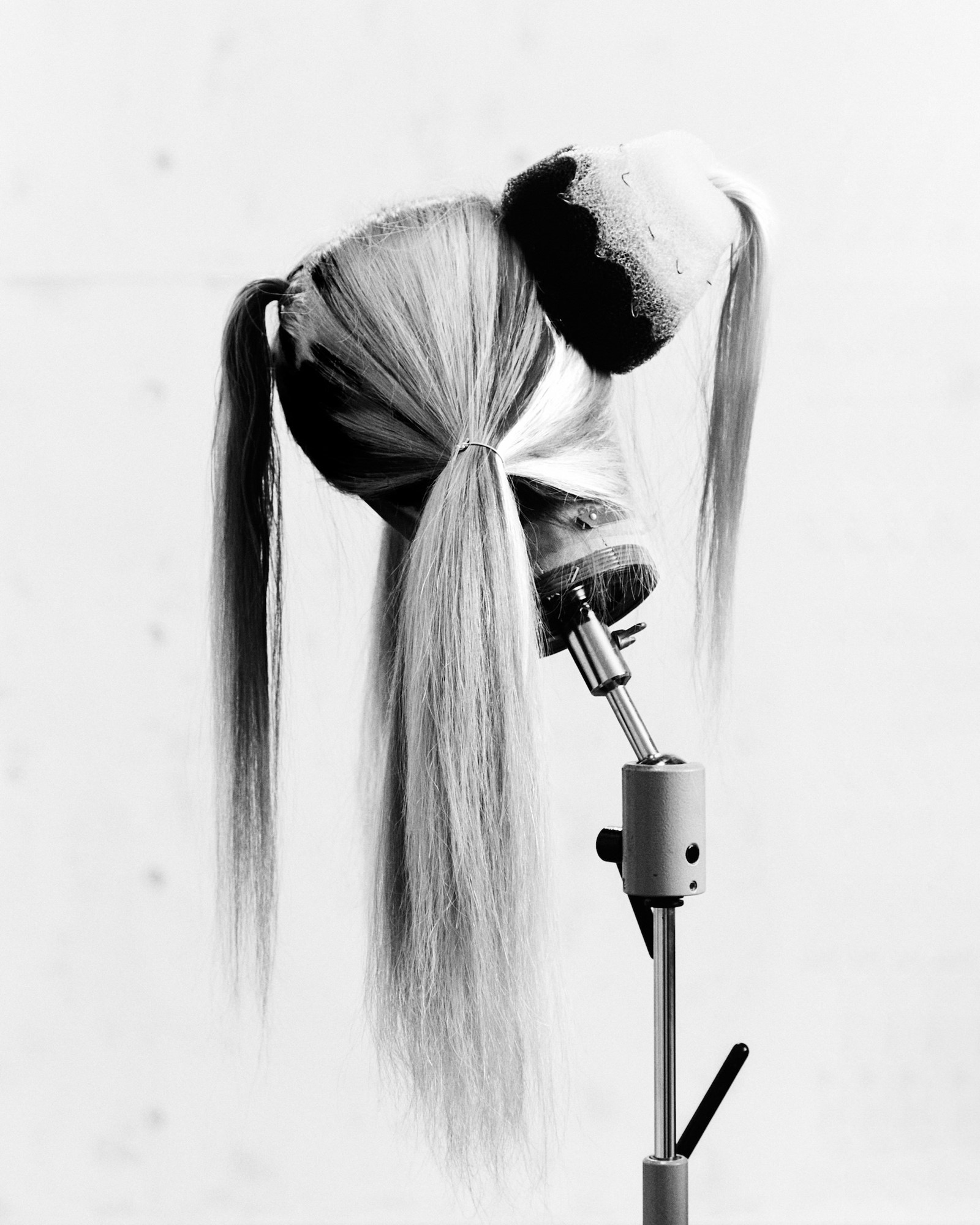
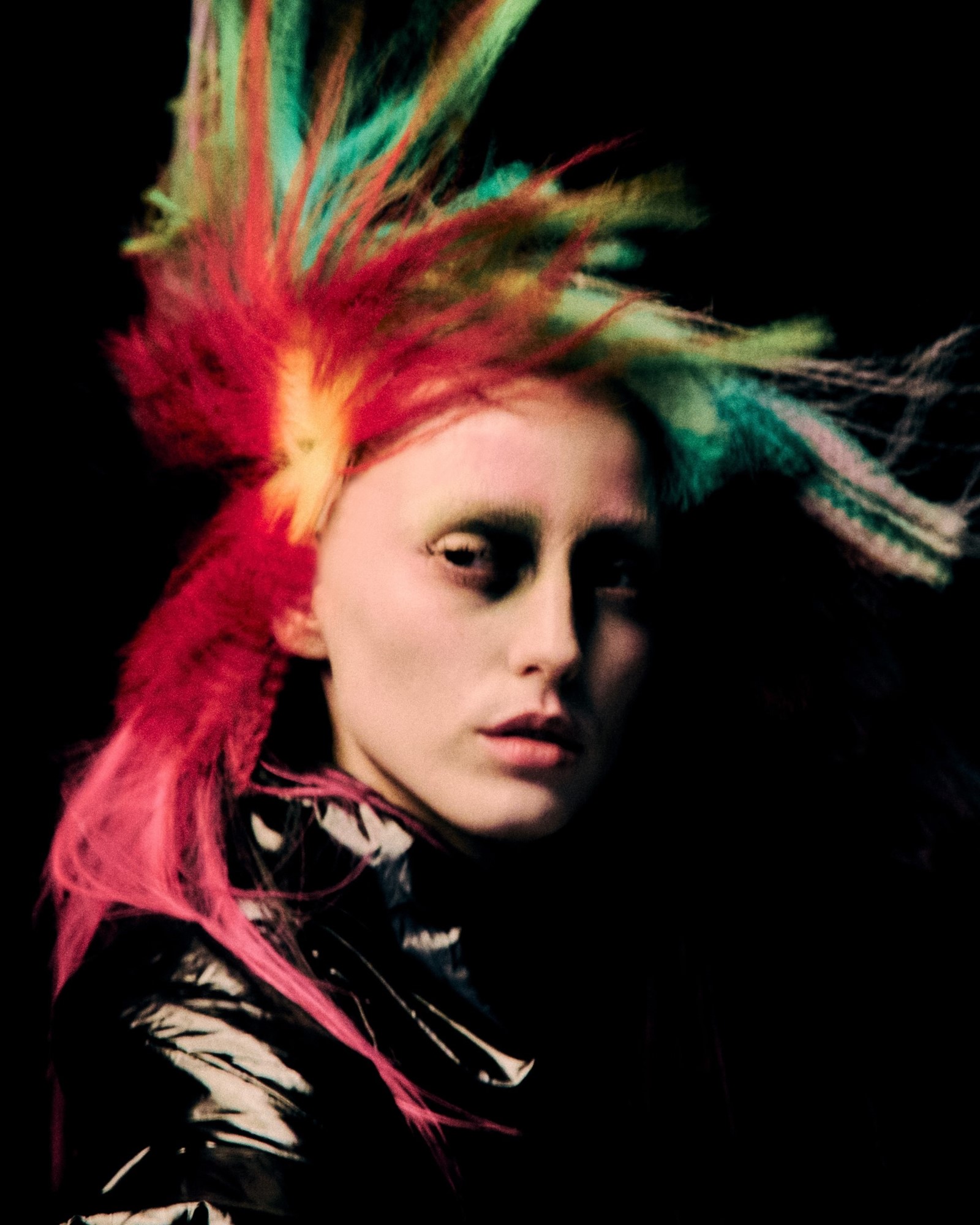
“It’s about being open to conversation,” he stresses. “When I was doing Maison Margiela [A/W17 couture], John [Galliano] said, ‘I want the hair to feel it’s been done quickly. They’ve come out the shower and left it wet.’ I said, ‘But that’s not enough for you, John. You need more, much more.’ He looked at me, waiting, and I said, ‘They could have been in such a rush that they forgot to rinse the shampoo out of their hair.’” And that’s what he did: Souleiman whisked up shampoo into a foam and threw it onto models heads as they took to the runway. Bubbles dripped and slopped to the ground. “You should always be open to that thing that makes the hairs on your arm stand up.”
From the scraggly, haphazard Mohicans at Alexander McQueen’s filthy and aggressive S/S94 show, to the Alphonse Mucha fluffs of pompadour hair at the extraordinary Maison Margiela Artisanal show earlier this year, Souleiman’s hair provides something greater and grander, something transportive. Fashion has changed immeasurably since Souleiman started out, but he remains unswervingly committed to ruffling the feathers of the establishment, all to make something more beautiful than his collaborators thought possible. “I guess what I bring to the table is a sense of security. I allow people the freedom to dream, and I can produce that dream for them.”
Eugene Souleiman’s masterclass The Land of Dreams is open for pre-sale through Wig Academy now. Book here.
in HTML format, including tags, to make it appealing and easy to read for Japanese-speaking readers aged 20 to 40 interested in fashion. Organize the content with appropriate headings and subheadings (h1, h2, h3, h4, h5, h6), translating all text, including headings, into Japanese. Retain any existing
tags from
Lead ImageEugene Souleiman for Wig Academy Photography by Harry Miller
Eugene Souleiman is rolling cigarettes and smoking them at a seemingly glacial pace as he Zooms in from his studio in East Sussex, ensconced in a sunny corner away from the alleged “mess” of his hairy works of genius beyond where his webcam can see. “This is my permanent … I don’t know, place of chaos, really,” he says wryly. “It’s in a really beautiful part of the world, near Ashdown Forest. It’s very barren.” It’s understandable he would headquarter his work away from London’s incessant racket; as a hairstylist, Souleiman has spent more than 40 tireless years leaving his mark on some of fashion’s greatest moments, rejecting hair orthodoxy and blazing a new trail that other stylists couldn’t help but follow. He’s worked with the greats, including John Galliano, Alexander McQueen, Junya Watanabe, Yohji Yamamoto, Lady Gaga, and many more. “I wouldn’t say I was a traditional hairdresser,” he claims, which I’d say is something of an understatement.
We’re here to discuss his recent collaboration with Wig Academy, an online hub for video masterclasses in hair and wig styling, founded by hairstylist Pablo Kuemin during the pandemic. “Like all of the best projects, it started out as a conversation between friends. It was at a time when we were struggling to have an outlet,” he says, “and it was great for me to go back to the drawing board. I used to teach hairdressers, but I always thought the system of training and the dynamics of ‘teacher-student’ weren’t really current or relevant.”
In the videos, Souleiman dons a GoPro as he recreates 13 singular looks from his archive, dyeing, snipping, spraying, even flocking hair, all on a specially made concrete mannequin. There’s a visual guide to recreating Grace Coddington’s russet waves, an amorphous neon pink afro, and even a towering beehive wig constructed around a 19th-century crinoline. “We looked at every area [of hairstyling tuition] and basically fucked with it. It’s the first thing I’ve done that I felt like I haven’t been handcuffed.” What was meant to be a series of eight videos spiralled into 12 as he pushed his reinventions further than before – not just utilising techniques that could be learned in a checkbox-graded diploma, but through feeling and impulse, applying products you might find in a builders merchants or art suppliers. “We don’t talk about what inspires us enough. We’re always in the right side of our brains with the technique,” Souleiman says. “Whenever I hear someone talk like that, they just lose me. I don’t find it interesting in the slightest.”


Souleiman grew up in 1970s London during a time of cultural revolution. At a time when The Clash and Sex Pistols were leading a creative rebellion, and disenfranchised youth bit back at the mainstream, Souleiman was kicked out of Goldsmiths University and arrived at a local job centre. He wore Vivienne Westwood clothes with his punk rocker hair, and was told he’d make a good hairdresser by one of the staff. An apprenticeship preceded an assisting job with Vidal Sassoon’s protégé Trevor Sorbie, before forging his own way in the editorials of countercultural titles like Dazed and i-D.
“When I started I literally had no money. I was eating beans on toast for a year and taking multivitamins. I remember not being able to afford to travel, I was getting the train to London Bridge for The Face not having a ticket, and I had to wait for the guard to go to another platform so I could jump over the fence and walk to Old Street with a rucksack full of hair equipment,” he remembers. “When I started there wasn’t 400 quid a day, there wasn’t Uber, there wasn’t catering. I remember backstage at one of Lee [Alexander] McQueen’s first shows, his mum brought tinned salmon and cucumber sandwiches and three bottles of lemonade for everyone at the show. But I think hard times grow strong people.” By the early 90s, with the advent of grunge, he was working with Calvin Klein, Jil Sander and Prada.
Souleiman credits his longevity to an adaptability with clients. The prolific people and brands he’s worked are outsiders and radicals who have built their worlds embedded with personal meaning and ideologies, and a need to communicate something greater, more vital than simply the cloth they use to dress bodies. “My first show in Paris was with Yohji. I went to the fitting and everything on the rack was black, black, black – a sea of black clothes. I thought, what the fuck am I going to do with this? They’re going to look like nuns. When they were fitting the girls, and I realised the clothes came to life when they were worn – there was a relationship between the body and the clothing happening inside the outfit,” he says. “The space in between is the thing that creates the outfit. That changed how I look at hair; it’s not about creating a curl, it’s what happens between the curl and the movement. It gave hair a life force.”


In school, Souleiman struggled with academia. “I’m on the spectrum of a few things: I have a little ADHD, and I’m dyslexic. I taught myself to read. I could probably understand two or three words of a sentence to begin with, and there would always be one word that caught me. I would read the few words that I understood, and imagine what the next word is,” he says, before having a eureka moment about the inner wirings of this brain. “I was constantly going backwards and forwards, and that’s kind of how I work creatively. If something’s not quite right, I’ll step back, have a coffee and get my assistant to pretend they’re doing something. All of a sudden it will make sense, like I’m remembering that missing word. I’m constantly going in and out.”
I met Souleiman once on set when he’d worked his magic for a cover shoot in AnOther Magazine, which was photographed by his regular collaborator Craig McDean. The atmosphere on most editorial shoots can often feel quite chilly, as creatives quickly and quietly tussle to stamp their personal mark on each look. But Souleiman snipped through the tension, cracking jokes with the models and crew who conversed with and confided in him. He asked McDean and our fashion director Katie Shillingford to open up, explain their references, their hopes for each image. He listened eagerly, politely pitched his ideas, and delicately crafted each hairstyle. The outcome was brilliant.


“It’s about being open to conversation,” he stresses. “When I was doing Maison Margiela [A/W17 couture], John [Galliano] said, ‘I want the hair to feel it’s been done quickly. They’ve come out the shower and left it wet.’ I said, ‘But that’s not enough for you, John. You need more, much more.’ He looked at me, waiting, and I said, ‘They could have been in such a rush that they forgot to rinse the shampoo out of their hair.’” And that’s what he did: Souleiman whisked up shampoo into a foam and threw it onto models heads as they took to the runway. Bubbles dripped and slopped to the ground. “You should always be open to that thing that makes the hairs on your arm stand up.”
From the scraggly, haphazard Mohicans at Alexander McQueen’s filthy and aggressive S/S94 show, to the Alphonse Mucha fluffs of pompadour hair at the extraordinary Maison Margiela Artisanal show earlier this year, Souleiman’s hair provides something greater and grander, something transportive. Fashion has changed immeasurably since Souleiman started out, but he remains unswervingly committed to ruffling the feathers of the establishment, all to make something more beautiful than his collaborators thought possible. “I guess what I bring to the table is a sense of security. I allow people the freedom to dream, and I can produce that dream for them.”
Eugene Souleiman’s masterclass The Land of Dreams is open for pre-sale through Wig Academy now. Book here.
and integrate them seamlessly into the new content without adding new tags. Ensure the new content is fashion-related, written entirely in Japanese, and approximately 1500 words. Conclude with a “結論” section and a well-formatted “よくある質問” section. Avoid including an introduction or a note explaining the process.


